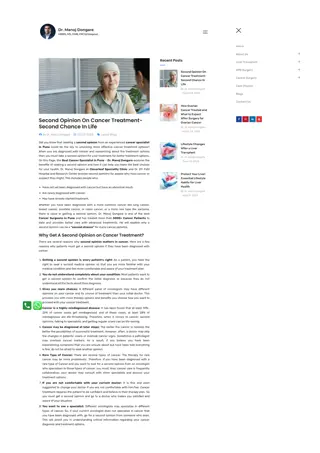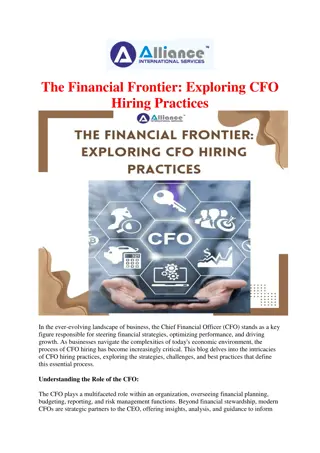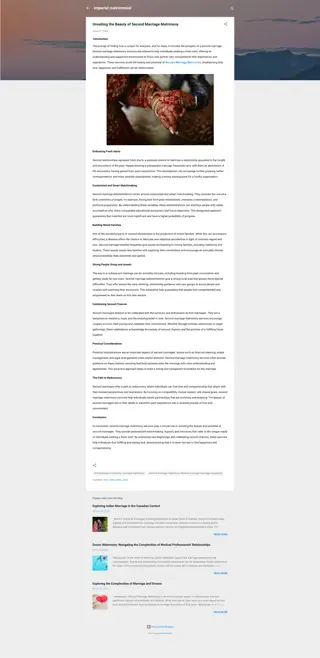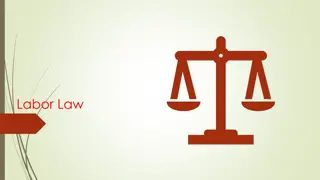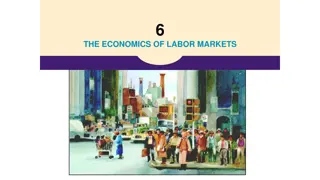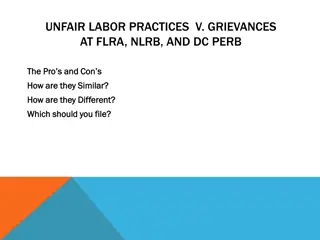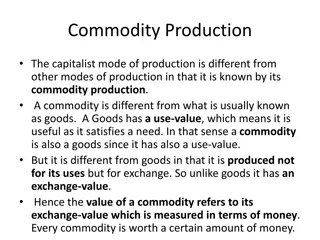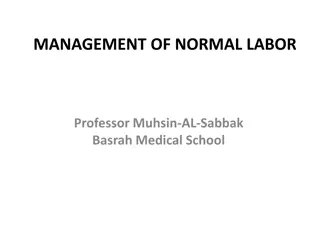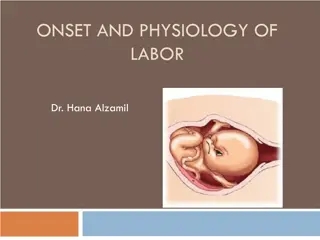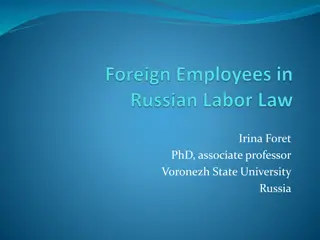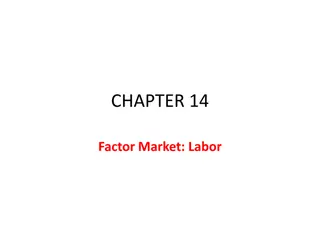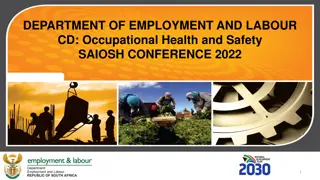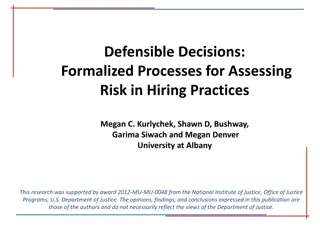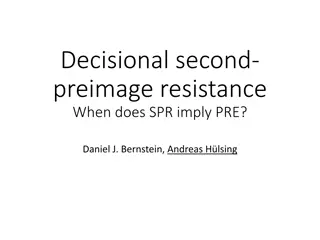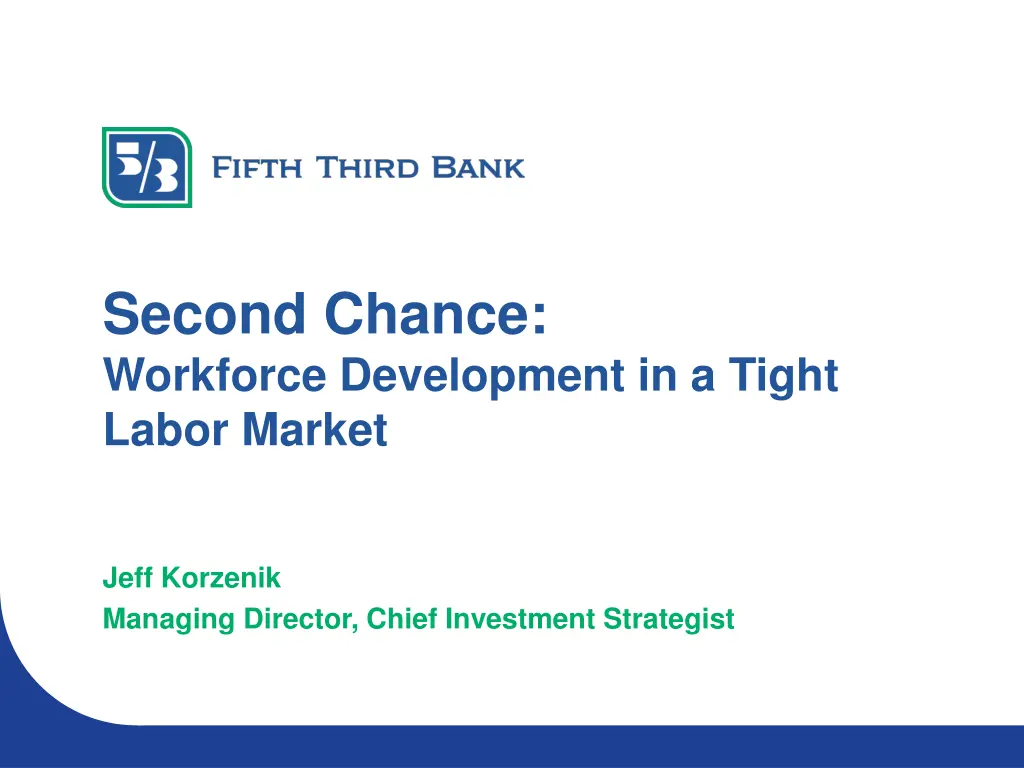
Unlocking Opportunities in Workforce Development
Explore the challenges and solutions in workforce development amidst a tight labor market. Dive into the impact of macroeconomic factors and social issues, including second chance hiring and talent pools, offering a fresh perspective on enhancing productivity and participation.
Download Presentation

Please find below an Image/Link to download the presentation.
The content on the website is provided AS IS for your information and personal use only. It may not be sold, licensed, or shared on other websites without obtaining consent from the author. If you encounter any issues during the download, it is possible that the publisher has removed the file from their server.
You are allowed to download the files provided on this website for personal or commercial use, subject to the condition that they are used lawfully. All files are the property of their respective owners.
The content on the website is provided AS IS for your information and personal use only. It may not be sold, licensed, or shared on other websites without obtaining consent from the author.
E N D
Presentation Transcript
Second Chance: Workforce Development in a Tight Labor Market Jeff Korzenik Managing Director, Chief Investment Strategist
Whats macro is micro 4.5 4.0 4.0 Potential Labor Force Productivity* Potential Labor Force 3.4 3.2 3.5 3.2 3.0 2.5 2.5 Percent 1.9 2.0 1.5 1.5 1.0 0.5 0.0 1950-1973 1974-1981 1982-1990 1991-2001 2002-2007 2008-2017 2018-2028 F Source: Congressional Budget Office Compound annual growth rates over the specified periods calculated using calendar year data *The ratio of potential GDP to the potential labor force 1
Compounded by the pandemic Older Workers Stay Away Reallocation Friction Augmented Unemployment Benefits Millennial Women & Child-Rearing The Social Ills of post-2009 Return Long-term Unemployment The Opioid Epidemic Criminal Justice Involvement 3
Why this talent pool #1 80,000,000 70,000,000 70,000,000 60,000,000 50,000,000 40,000,000 30,000,000 19,000,000 20,000,000 10,000,000 7,304,910 2,392,589 0 Currently in prison or on parole Currently or formerly in prison or on parole Current or past felony supervision Interaction with the law Source: University of Georgia, National Employment Law Project 5
The models of second chance hiring Source: Untapped Talent: How Second Chance Hiring Works for Your Business and the Community (HarperCollins Leadership, April 2021) 6
The models of second chance hiring Source: Untapped Talent: How Second Chance Hiring Works for Your Business and the Community (HarperCollins Leadership, April 2021) 7
The elements of success True Second Chance Model Candidate Selection Process Employee Support Process Source: Untapped Talent: How Second Chance Hiring Works for Your Business and the Community (HarperCollins Leadership, April 2021) 8
The model in practice: investment not cost Potential partners Potential gaps to solve National organizations Time/place to meet with parole officers Local Organizations Transportation American Jobs Centers/Workforce Financial Education Boards Mentoring Government Housing Clothing Cell phone 9
Supplemental models Transitional employment Second chance staffing agencies Incarceration work experience Advanced professional training Entrepreneurship Second chance/at-risk youth internships 10
Bridging the box Low-risk hires Know your felony Connect with second chance pioneers Connect with non-profit partners Review and eliminate vendor restrictions Offer amnesty 11
Key educational resources Getting Talent Back to Work Certification (https://store.shrm.org/Getting-Talent- Back-to-Work-Certificate) Dave s Killer Bread Foundation Second Chance Playbook (https://dkbfoundation.org/playbook-3/) Checkr's Fair Chance Hiring e-book (https://checkr.com/resources/ebook/decrease- recidivism-with-fair-chance-hiring) Levelset s Fair Chance Hiring Assessment (https://www.levelset.us/fair- chance-hiring-assessment) 12
Questions? 14
Disclosures The labor force participation rate is a measure of the economy s active workforce. It is the sum of all workers who are employed or actively seeking employment divided by the total noninstitutionalized, civilian working-age population. The fertility rate represents the number of children that would be born to a woman if she were to live to the end of her childbearing years and bear children in accordance with current age- specific fertility rates. Opinions are provided by Fifth Third Private Bank, National Association. This information is intended for educational purposes only and does not constitute the rendering of investment advice or a specific recommendation on investment activities and trading. The mention of any specific security does not constitute a solicitation or an offer to buy or sell any security. This information is current as of the date of this presentation and is subject to change at any time, based on market and other conditions. Asset Allocation, Diversification, Alternative Investment and Hedging strategies are intended to mitigate the overall risk within your portfolio. Some strategies may be subject to a higher degree of market risk than others. There are no guarantees that any strategy presented will perform as intended. Indexes are unmanaged and do not incur investment management fees. You cannot invest directly in an index. Past performance is no guarantee of future results. Fifth Third Private Bank is a division of Fifth Third Bank, National Association, which is an indirect subsidiary of Fifth Third Bancorp. Banking, investment and insurance products and services are offered through or made available by one or more of Fifth Third Bancorp s indirect subsidiaries. Investments, investment services and insurance: Are Not FDIC Insured Are Not Insured by Any Federal Government Agency Offer Not Bank Guaranteed May Lose Value Are Not a Deposit Insurance Products are made available through Fifth Third Insurance Agency, Inc. 15

